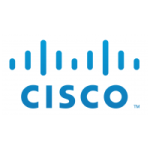IMPLEMENTING CISCO QUALITY OF SERVICE (QOS)
Course Overview
Implementing Cisco Quality of Service (QOS) v2.5 provides learners with in-depth knowledge of QoS requirements, conceptual models such as best effort, IntServ, and DiffServ, and the implementation of QoS on Cisco platforms. The curriculum covers the theory of QoS, design issues, and configuration of various QoS mechanisms to facilitate the creation of effective administrative policies providing QoS. Case studies and lab exercises included in the course help learners to apply the concepts from the individual modules to real-life scenarios. The course also gives learners design and usage rule for advanced QoS features. This gives the learners the opportunity to design and implement efficient, optimal, and trouble-free multiservice networks.

Course Objectives
After completing the course, students will be able to:
- Explain the need for QoS, describe the fundamentals of QoS policy, and identify and describe the different models that are used for ensuring QoS in a network
- Explain the use of MQC and AutoQoS to implement QoS on the network and describe some of the mechanisms used to monitor QoS implementations
- Given a converged network and a policy defining QoS requirements, classify and mark network traffic to implement the policy
- Use Cisco QoS queuing mechanisms to manage network congestion
- Use Cisco QoS congestion avoidance mechanisms to reduce the effects of congestion on the network
- Use Cisco QoS traffic policing and traffic shaping mechanisms to effectively limit the rate of network traffic
- Given a low speed WAN link, use Cisco link efficiency mechanisms to improve the bandwidth efficiency of the link
- Describe the recommended best practices and methods used for end-to-end QoS deployment in the enterprise
Course Prequisites
Target Audience
The primary target audiences for the course are:
- Pre- and post-sales technical engineers responsible for designing, implementing, or troubleshooting networks
- Network architects responsible for designing multiservice networks to carry voice, video, and data traffic in enterprise or service provider environments
- Advanced Unified Communications Specialization
- Master UC Specialization
- Master Telepresence ATP
Secondary target audiences are:
- CCIE R&S Candidates
Course Outline
Module 1: Introduction to QoS
- Lesson 1: Review Converged Networks
- Lesson 2: Understand QoS
- Lesson 3: Describe Best-Effort and Integrated Services Models
- Lesson 4: Describe the Differentiated Services Model
Module 2: Implement and Monitor QoS
- Lesson 1: MQC Introduction
- Lesson 2: Monitor QoS
- Lesson 3: Define Campus AutoQoS
- Lesson 4: Define WAN AutoQoS
Module 3: Classification and Marking
- Lesson 1: Classification and Marking Overview
- Lesson 2: MQC for Classification and Marking
- Lesson 3: NBAR for Classification
- Lesson 4: Use of QoS Preclassify
- Lesson 5: Campus Classification and Marking
Module 4: Congestion Management
- Lesson 1: Queuing Introduction
- Lesson 2: Configure WFQ
- Lesson 3: Configure CBWFQ and LLQ
- Lesson 4: Configure Campus Congestion Management
Module 5: Congestion Avoidance
- Lesson 1: Congestion Avoidance Introduction
- Lesson 2: Configure Class-Based WRED
- Lesson 3: Configure ECN
- Lesson 4: Describe Campus-Based Congestion Avoidance
Module 6: Traffic Policing and Shaping
- Lesson 1: Traffic Policing and Shaping Overview
- Lesson 2: Configure Class-Based Policing
- Lesson 3: Campus Policing
- Lesson 4: Configure Class-Based Shaping
- Lesson 5: Configure Class-Based Shaping on Frame Relay Interfaces
- Lesson 6: Configure Frame Relay Voice-Adaptive Traffic Shaping and Fragmentation
Module 7: Link Efficiency Mechanisms
- Lesson 1: Link Efficiency Mechanisms Overview
- Lesson 2: Configure Class-Based Header Compression
- Lesson 3: Configure LFI
Module 8: Deploying End-to-End QoS
- Lesson 1: Apply Best Practices for QoS Policy Design
- Lesson 2: End-to-End QoS Deployments
Labs
- Lab 2-1: IP SLA Setup and QoS Baseline Measurement
- Lab 2-2: Configuring QoS with Cisco AutoQoS
- Lab 3-2: Classification and Marking Using MQC
- Lab 3-3: Using NBAR for Classification
- Lab 3-4: Configuring QoS Preclassify
- Lab 3-5: Campus Classification and Marking Using MQC
- Lab 4-1: Configuring Fair Queuing
- Lab 4-2: Configuring LLQ-CBWFQ
- Lab 4-3: Configuring Campus-Based Queuing Mechanisms
- Lab 5-2: Configuring DSCP-Based WRED
- Lab 5-3: Configuring WTD Thresholds
- Lab 6-1: Configuring Class-Based Policing
- Lab 6-2: Configuring Class-Based Shaping
- Lab 7-1: Configuring Class-Based Header Compression
- Lab 7-2: Configuring LFI
- Lab 8-1: Mapping Enterprise QoS Policy to the Service Provider Policy
What Our Students Have to Say
"As a client of Makintouch, I would recommend the company as a leading PC-based training school. When we needed half day courses to fit the schedules of our employees they were able to customize them to meet our company’s needs"
– Java Struts

Taiwo Alaka
MTN
I would recommend this course as it is up to date with the current release which is quite rare as things move on so fast. The classroom set up worked well and the labs were good and relevant to the course.’
– Oracle

Kayode Akinpelu
Stanbic IBTC
